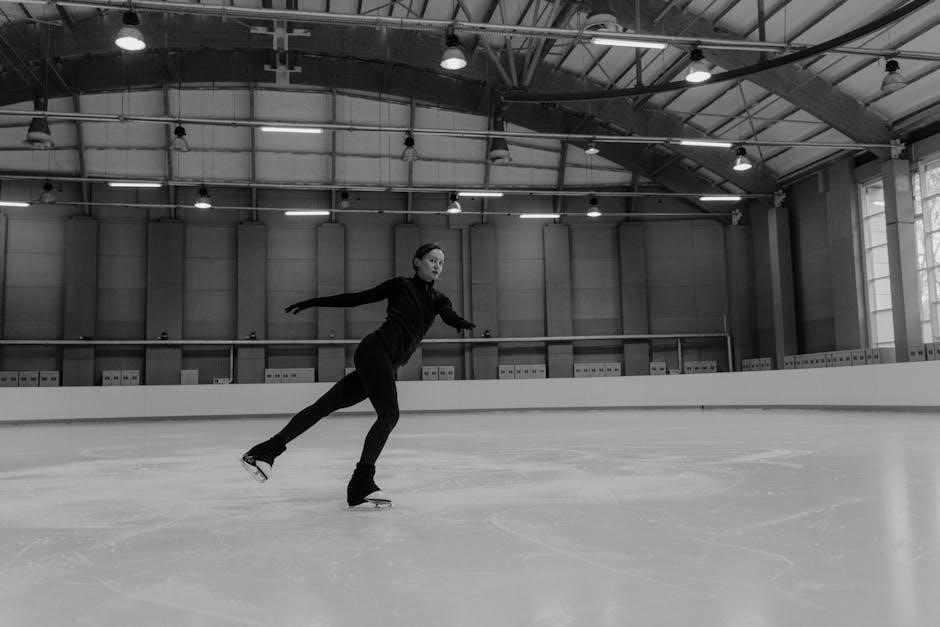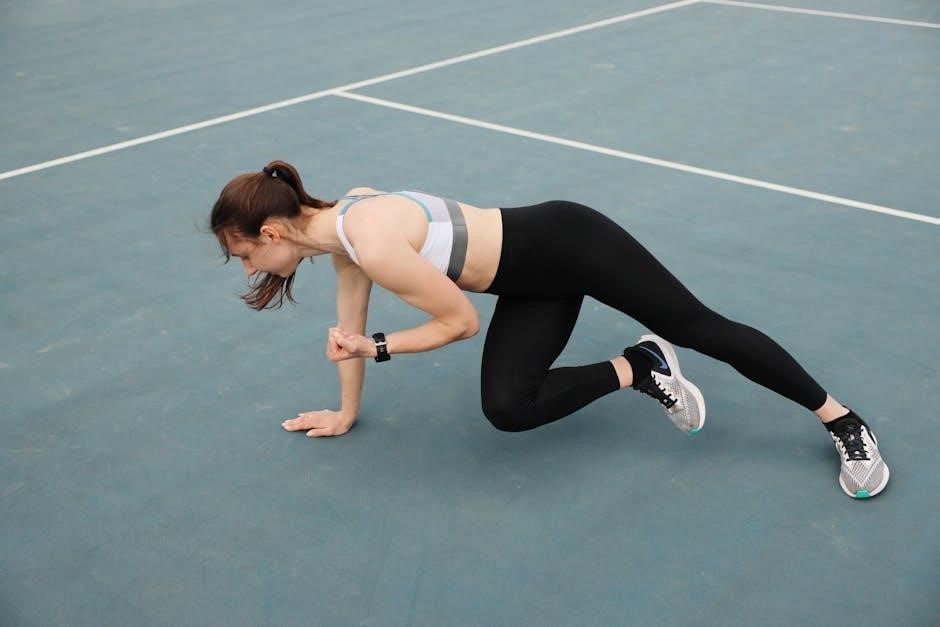tmj dysfunction exercises pdf

Find guidance, illustrations, and instructions for exercises to relieve TMJ dysfunction. These resources include PDFs with detailed steps for relaxed jaw exercises, posture correction, and facial massage techniques to ease TMJ pain.

Understanding TMJ Dysfunction
Temporomandibular joint (TMJ) dysfunction refers to a range of conditions causing pain and impaired movement of the jaw joint and surrounding muscles. The TMJ connects the mandible (lower jaw) to the temporal bone of the skull, enabling essential functions like chewing, speaking, and yawning. Dysfunction arises from various factors, including genetics, arthritis, jaw injuries, teeth grinding (bruxism), and stress. Symptoms vary but commonly include jaw pain, headaches, clicking or popping sounds in the jaw, limited jaw movement, and muscle stiffness. Proper diagnosis often involves a physical examination, imaging (like X-rays or MRI), and a review of medical history to rule out other conditions. Effective management strategies focus on pain relief, restoring normal jaw function, and addressing underlying causes. These strategies include lifestyle modifications (like avoiding hard foods and reducing stress), physical therapy (including specific TMJ exercises), medications (pain relievers or muscle relaxants), and, in some cases, more invasive treatments like injections or surgery. Understanding the complexities of TMJ dysfunction is crucial for developing a personalized treatment plan to alleviate symptoms and improve quality of life. Early intervention and a multidisciplinary approach often lead to better outcomes for individuals suffering from this condition. Addressing factors like posture, stress management, and muscle imbalances can significantly contribute to long-term relief and prevention of recurrence.
Common Symptoms of TMJ Dysfunction
The symptoms of temporomandibular joint (TMJ) dysfunction manifest diversely, impacting daily life significantly. Jaw pain is a hallmark, often described as a dull ache or sharp, stabbing sensation localized in the jaw joint, face, or neck. This pain can intensify with jaw movement, such as chewing, speaking, or yawning. Headaches, particularly tension headaches, are frequently associated with TMJ disorders, radiating from the temples or back of the head. Clicking, popping, or grating sounds within the jaw joint during movement are common, although not always indicative of a severe problem. Limited jaw movement, characterized by difficulty opening or closing the mouth fully, can hinder eating and speaking. Muscle stiffness or tenderness in the jaw, face, neck, and shoulders often accompanies TMJ dysfunction, resulting from muscle imbalances and tension. Earaches or a sensation of fullness in the ears, unrelated to infection, can also occur due to the TMJ’s proximity to the ear. Dizziness or vertigo, though less common, may arise from TMJ-related issues affecting the inner ear or balance mechanisms. Teeth grinding (bruxism) and clenching, often exacerbated by stress, contribute to TMJ symptoms and can lead to tooth wear and jaw muscle fatigue. Malocclusion, or misalignment of the teeth, can further aggravate TMJ dysfunction by altering jaw mechanics. Changes in bite, causing discomfort or difficulty in chewing, may also be experienced. Recognizing these diverse symptoms is crucial for prompt diagnosis and tailored management of TMJ dysfunction, improving overall well-being.
Isometric Exercises for Jaw Muscles
Isometric exercises play a vital role in managing TMJ dysfunction by strengthening and stabilizing the jaw muscles without causing excessive joint movement. These exercises involve contracting muscles against a stationary resistance, minimizing stress on the temporomandibular joint. One common isometric exercise is jaw opening resistance. To perform this, place your fist under your chin and gently try to open your mouth, resisting the movement with your fist. Hold this position for 5-10 seconds, then relax. Repeat this exercise several times, focusing on engaging the jaw muscles without allowing the jaw to move. Another effective isometric exercise involves lateral jaw resistance. Position your hand against the side of your jaw and gently try to move your jaw sideways against the resistance of your hand. Hold for 5-10 seconds, then relax. Repeat this exercise on both sides of your jaw, ensuring equal engagement of the muscles. For jaw closing resistance, place your fingers under your chin and gently try to close your mouth, resisting the movement with your fingers. Hold for 5-10 seconds, then relax. This exercise helps strengthen the muscles responsible for jaw closure. It is crucial to maintain proper posture during these exercises to avoid straining the neck or shoulder muscles. Perform these exercises gently and avoid any movements that cause pain or discomfort. Consistency is key to achieving optimal results. Incorporate these isometric exercises into your daily routine, performing them several times a day. By strengthening and stabilizing the jaw muscles, isometric exercises can reduce pain, improve jaw function, and enhance overall TMJ health.
Relaxed Jaw Exercise Instructions
The relaxed jaw exercise is a foundational technique for alleviating tension and promoting healing in individuals experiencing TMJ dysfunction. This exercise aims to reduce muscle stiffness and improve overall jaw comfort. Begin by finding a quiet and comfortable space where you can sit or lie down without distractions. Ensure your body is relaxed, with your shoulders loose and your head supported. Gently separate your teeth, allowing your jaw to hang loosely. It’s crucial to avoid clenching or grinding your teeth during this exercise. Focus on releasing any tension in your jaw muscles. You can achieve this by consciously relaxing the muscles around your cheeks, temples, and forehead. Imagine your jaw muscles softening and releasing their grip. To enhance relaxation, you can incorporate deep breathing techniques. Inhale slowly and deeply through your nose, allowing your abdomen to expand. Exhale slowly through your mouth, releasing any remaining tension in your body. Continue this deep breathing pattern throughout the exercise. Maintain the relaxed jaw position for several minutes, focusing on releasing tension with each exhale. You can perform this exercise several times a day, especially during periods of stress or jaw discomfort. As you become more comfortable with the exercise, you can gradually increase the duration. Remember to listen to your body and avoid pushing yourself beyond your comfort level. If you experience any pain or discomfort, stop the exercise and consult with a healthcare professional. The relaxed jaw exercise can be a valuable tool for managing TMJ dysfunction and promoting overall well-being.
TMJ Side Gliding Exercise
The TMJ side gliding exercise is designed to improve the range of motion and flexibility of the temporomandibular joint, helping to alleviate pain and stiffness associated with TMJ dysfunction. This exercise focuses on controlled lateral movements of the jaw, promoting balanced muscle function and reducing joint restrictions. Before starting, ensure you are in a comfortable seated position with your back straight and shoulders relaxed. Gently open your mouth slightly, keeping your teeth separated. It’s important to maintain a relaxed jaw throughout the exercise, avoiding any clenching or grinding. Slowly move your lower jaw to the right, as if you are trying to align your bottom teeth with your top teeth on the right side. Focus on maintaining a smooth, controlled movement, avoiding any jerky or sudden motions. As you glide your jaw to the right, you should feel a gentle stretch in the muscles on the opposite side of your jaw. Hold this position for a few seconds, focusing on relaxing your jaw muscles. Slowly return your jaw to the center position, ensuring a smooth and controlled movement. Repeat the same movement to the left side, gliding your jaw to the left as far as is comfortable. Hold the stretched position for a few seconds, focusing on relaxing your jaw muscles. Return your jaw to the center position. Repeat this side-to-side gliding movement several times, gradually increasing the range of motion as you become more comfortable. It’s important to listen to your body and avoid pushing yourself beyond your pain-free range. If you experience any pain or discomfort, stop the exercise and consult with a healthcare professional. Consistent practice of the TMJ side gliding exercise can help improve jaw mobility, reduce pain, and promote overall TMJ health.
Posture and TMJ Exercises
The relationship between posture and TMJ (temporomandibular joint) health is significant, as poor posture can exacerbate TMJ dysfunction symptoms. Maintaining proper posture helps to align the head, neck, and jaw, reducing strain on the TMJ and surrounding muscles. Incorporating posture correction exercises into your TMJ exercise routine can provide additional relief and improve long-term outcomes. One common posture-related issue is forward head posture, where the head protrudes forward, placing excessive stress on the neck and jaw muscles. This can lead to muscle imbalances and increased TMJ pain. A key exercise to address forward head posture is the chin tuck. To perform a chin tuck, sit or stand tall with your shoulders relaxed. Gently draw your chin back towards your neck, as if you are making a double chin. Hold this position for a few seconds, focusing on feeling a gentle stretch in the back of your neck. Release and repeat several times. Another important aspect of posture is maintaining a neutral spine. This involves keeping your back straight and your shoulders aligned over your hips. Avoid slouching or hunching forward, as this can contribute to TMJ pain. Regularly practicing good posture throughout the day can help to reduce strain on your TMJ. In addition to posture correction exercises, it’s important to be mindful of your posture during daily activities, such as sitting at a desk or using a computer. Ensure your workstation is ergonomically designed to support good posture. Adjust your chair height so that your feet are flat on the floor and your knees are at a 90-degree angle. Position your computer monitor at eye level to avoid straining your neck. Taking frequent breaks to stretch and move around can also help to prevent muscle stiffness and improve posture. By addressing posture issues and incorporating posture correction exercises into your TMJ exercise routine, you can significantly reduce pain, improve jaw function, and promote overall TMJ health.

Facial Massage Techniques for TMJ Relief
Facial massage is a valuable technique for providing relief from TMJ (temporomandibular joint) dysfunction. It helps to relax and maintain flexibility in the muscles around the jaw and forehead, reducing tension and pain. Regular facial massage can improve blood circulation, reduce muscle spasms, and promote overall relaxation, which can significantly alleviate TMJ symptoms. Before starting a facial massage, it’s beneficial to apply a gentle moisturizer or oil to your skin. This helps to reduce friction and allows your fingers to glide smoothly over the surface. Begin by massaging the jaw and cheek area. Use slow, smooth, circular motions, applying gentle pressure with your fingertips. Focus on areas where you feel tension or tenderness. Spend approximately 2-5 minutes massaging this region. Next, move to the temple region. Use the same circular motions to massage your temples, paying attention to any areas of tightness. This can help to relieve headaches and reduce tension in the surrounding muscles. Massage the temple region for another 2-5 minutes. Finally, massage your forehead using similar techniques. Start at the center of your forehead and move outwards towards your temples. Use gentle pressure and circular motions to release tension in your forehead muscles. Continue massaging your forehead for 2-5 minutes. In addition to these general techniques, there are specific massage points that can be particularly effective for TMJ relief. One such point is located just in front of your ear, where the TMJ is situated. Gently massage this area using small, circular motions. Another helpful point is located on the cheekbone, just below your eye. Apply gentle pressure to this point and massage in a circular motion. Remember to breathe deeply and relax during your facial massage. This will help to further reduce tension and promote overall relaxation. You can perform facial massage several times a day, especially when you are experiencing TMJ pain or stiffness. Combining facial massage with other TMJ exercises and treatments can provide comprehensive relief and improve your overall quality of life.

Advanced Mandibular Stabilization Exercises
Advanced mandibular stabilization exercises are designed to restore balanced strength and function to the muscles surrounding the temporomandibular joint (TMJ). These exercises aim to establish normal jaw movement and prevent clicking or popping sounds. They are typically introduced after mastering basic TMJ exercises and require careful attention to proper form and technique. One advanced exercise involves placing the knuckle of your index finger between your top and bottom teeth. Gently try to open your jaw against the resistance of your knuckle, but do not allow your teeth to touch. Hold this position for a few seconds, then relax. Repeat this exercise several times, focusing on maintaining a stable jaw position. Another effective exercise is the resisted opening exercise. Place your fist under your chin and gently try to open your jaw against the resistance of your fist. Be careful not to allow your jaw to click or pop during this exercise. Hold the resisted opening for a few seconds, then relax. Repeat this exercise several times, gradually increasing the amount of resistance as you become stronger. Mandibular stabilization exercises also include lateral movements. Gently move your jaw to the side, keeping your teeth slightly apart. Use your fingers to apply gentle resistance to the side of your jaw as you move it. Hold this position for a few seconds, then relax. Repeat this exercise on both sides of your jaw, focusing on maintaining a smooth and controlled movement. In addition to these specific exercises, it’s important to maintain good posture and body alignment throughout the day. Poor posture can contribute to TMJ dysfunction by placing excessive strain on the jaw muscles. Sit and stand with your shoulders back and your head level. Avoid slouching or hunching forward. It’s also helpful to be mindful of your jaw position throughout the day. Avoid clenching or grinding your teeth, as this can exacerbate TMJ symptoms. If you find yourself clenching or grinding, consciously relax your jaw muscles. Remember to consult with a physical therapist or healthcare professional before starting any advanced TMJ exercises. They can help you determine the appropriate exercises for your specific condition and ensure that you are performing them correctly. Regular practice of these exercises, combined with good posture and jaw awareness, can help to improve TMJ function and reduce pain.
